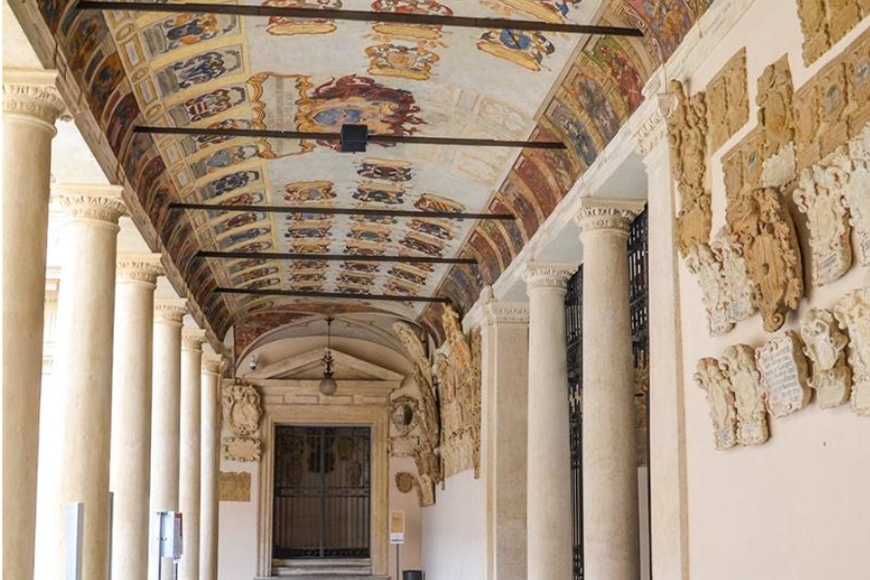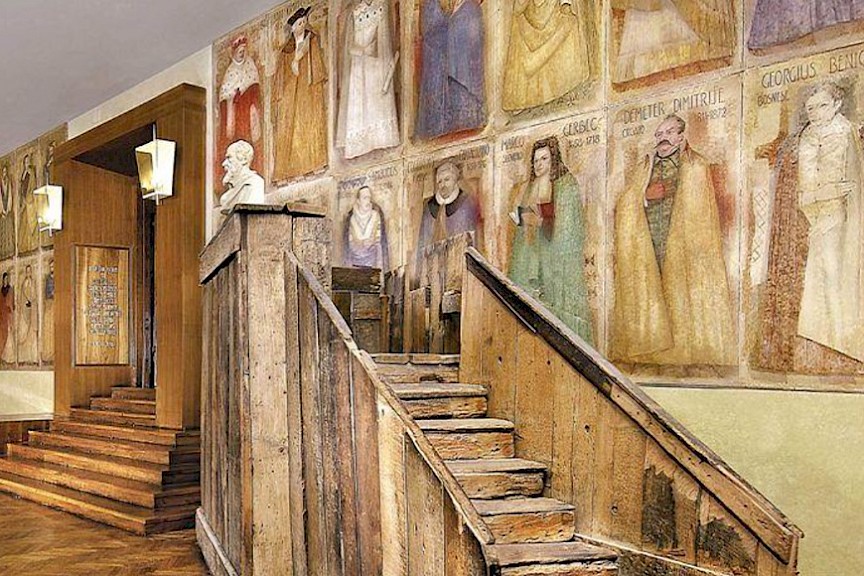
This year marks the 800th anniversary of the founding of the University of Padua, our beloved city. Active since 1922, Padua University is one of the oldest in the world. Today, just like in the past, it is also one of the main sources of cultural, scientific and social activity for the city.
After two complex years, spent between Distance Learning and health restrictions, the University has set out to find new life and new life. It has done so, among other initiatives, with a project of restoration of the portraits of the Sala dei Quaranta (litt. "Hall of the Forty"), to which we are happy to have adhered and contributed.

The Sala dei Quaranta precedes the Aula Magna in the Palazzo del Bo. The room takes its name from the presence of forty portraits by the artist Gian Giacomo dal Forno of illustrious foreign students who attended the University of Padua between the thirteenth and nineteenth centuries. The idea is that the portraits represent the role of the University as a "great center of encounters, freedom, exchanges and diffusion of culture". The room also features Galileo's ancient chair.
The University announced that "the restoration of the paintings in the Sala dei Quaranta was made possible through donations from private citizens, companies, associations, service clubs, consulates and embassies who have decided to actively participate in the enhancement of the University's heritage by becoming protagonists of the celebrations of the Eighth Centennial of the University of Padua." We are proud to be among them.
Among the characters on the walls are the King of Poland Stephen Bathory, the English physician William Harvey and the German philosopher and theologian Nicolò da Cusa. Morocolor has chosen to contribute to the restoration of a figure in particular: that of the Irish poet and playwright Oliver Goldsmith. For us, the figure of Goldsmith communicates perseverance, passion, talent and love for creativity.
The son of Charles and Anna Jones, Oliver entered Trinity College as a scholar in 1745. He remained there until 1750, when he began a difficult period in his life and career marked by both economic and psychological difficulties. He is therefore forced to interrupt his studies, which he will then resume with the help of an uncle, ending up graduating in Medicine. Meanwhile he traveled around the world, visiting Flanders, France, Switzerland and Germany; in 1755, attracted by the fame of Giovanni Battista Morgagni, he spent a few months in Padua. Meanwhile he continued to write and work on his works. He then settled in London, where he reached notoriety in 1766, with the publication of the novel "The Vicar of Wakefield".
To him we owe the way of saying: "Ask me no questions, and I'll tell you no fibs" ("do not ask me anything, and I will not lie").